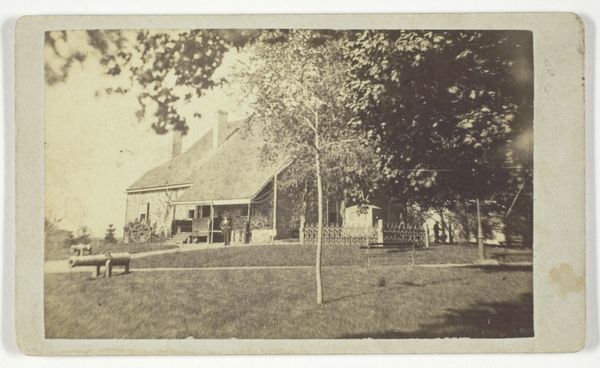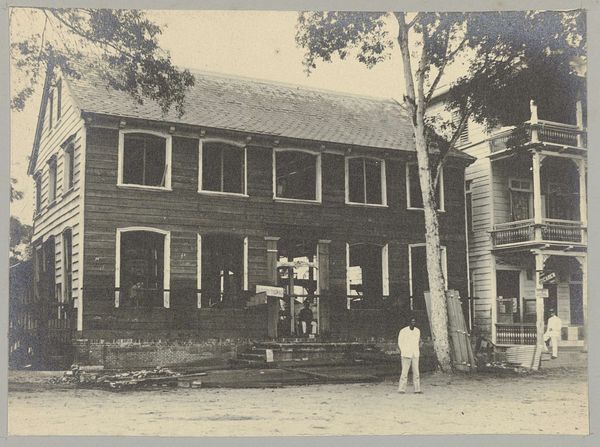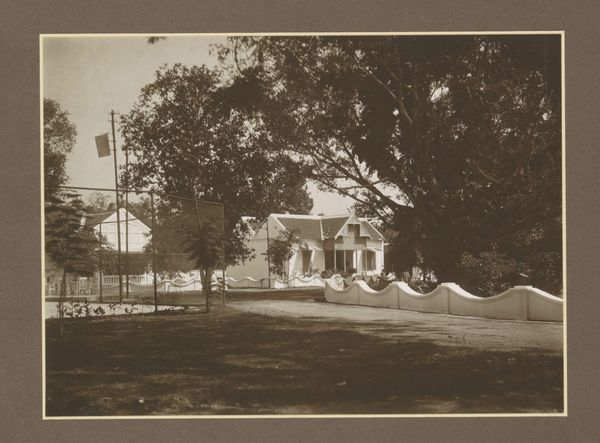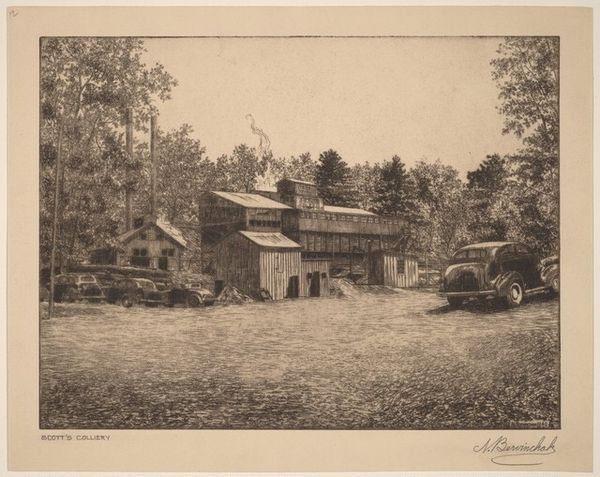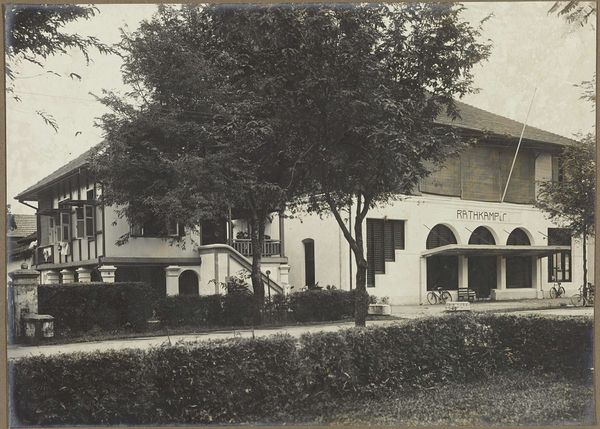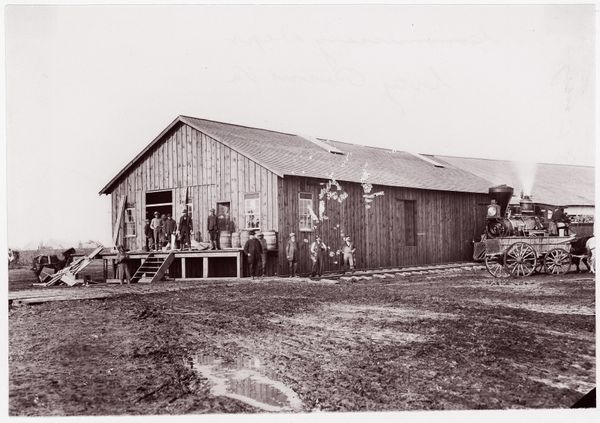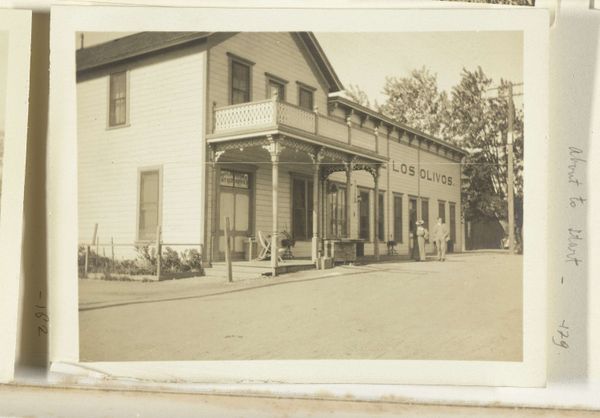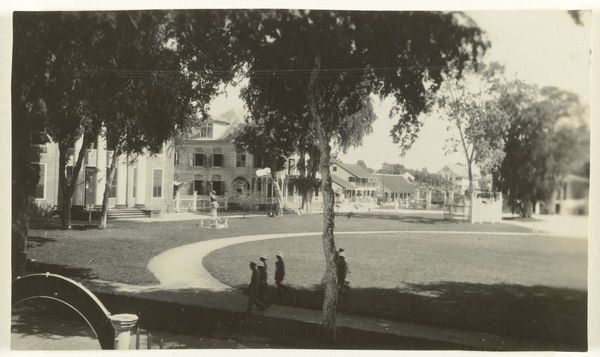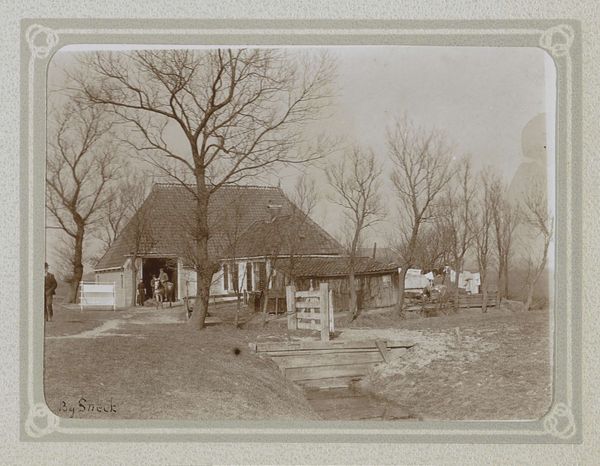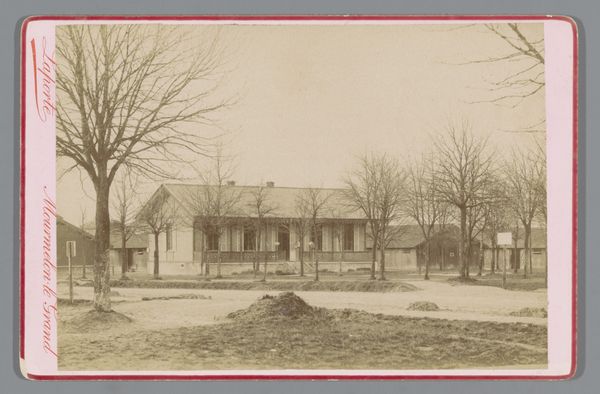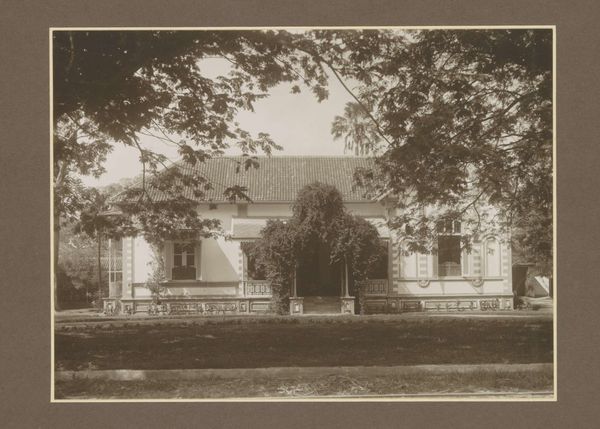
print, photography, gelatin-silver-print
#
outdoor environmental image
#
natural tone
#
dutch-golden-age
# print
#
landscape
#
photography
#
gelatin-silver-print
#
cityscape
#
realism
Dimensions: height 71 mm, width 96 mm
Copyright: Rijks Museum: Open Domain
Editor: So, here we have "Houses with Drying Laundry in Front, probably in Volendam," a gelatin silver print by G. Hidderley, dating roughly from 1900 to 1910. I'm really struck by the mundane beauty of the scene, this everyday moment captured so simply. What draws your eye? Curator: My interest lies in understanding this image as a material document of early 20th-century domestic life in Volendam. Note the texture of the gelatin silver print itself – its tonal range, the way light interacts with its surface. Think about the labour involved, not just in taking the photograph, but in preparing the chemicals, coating the paper, the whole alchemical process. It elevates everyday activity into an aesthetic object. Editor: That’s a great point! The printing process itself becomes part of the story. It’s easy to overlook that, focusing only on the subject matter. But what’s the social context here? Why capture this particular scene? Curator: Consider the rise of photography as a tool for documentation and social commentary around that time. Images of ordinary working-class life gained prominence, shaping public perception and even influencing policy. Look at the washing line—what does this repetitive labor of laundry suggest about gender roles, the cycles of daily life, and the public display of domestic activities in this community? This isn't just a pretty picture; it's a record of material conditions and social practices. Editor: So it's about reading the image as a piece of evidence, thinking about what went into making it and what that tells us about the world at the time. Fascinating! Curator: Exactly. By focusing on the process and the materials, we unpack a richer understanding of the image and the society that produced it. I have to agree this allows a greater sense of history within a single photographic frame. Editor: I’ll definitely be paying closer attention to the materiality and production of images from now on. Curator: Glad to hear it. This viewpoint always encourages a different depth of analysis to our perception.
Comments
No comments
Be the first to comment and join the conversation on the ultimate creative platform.
